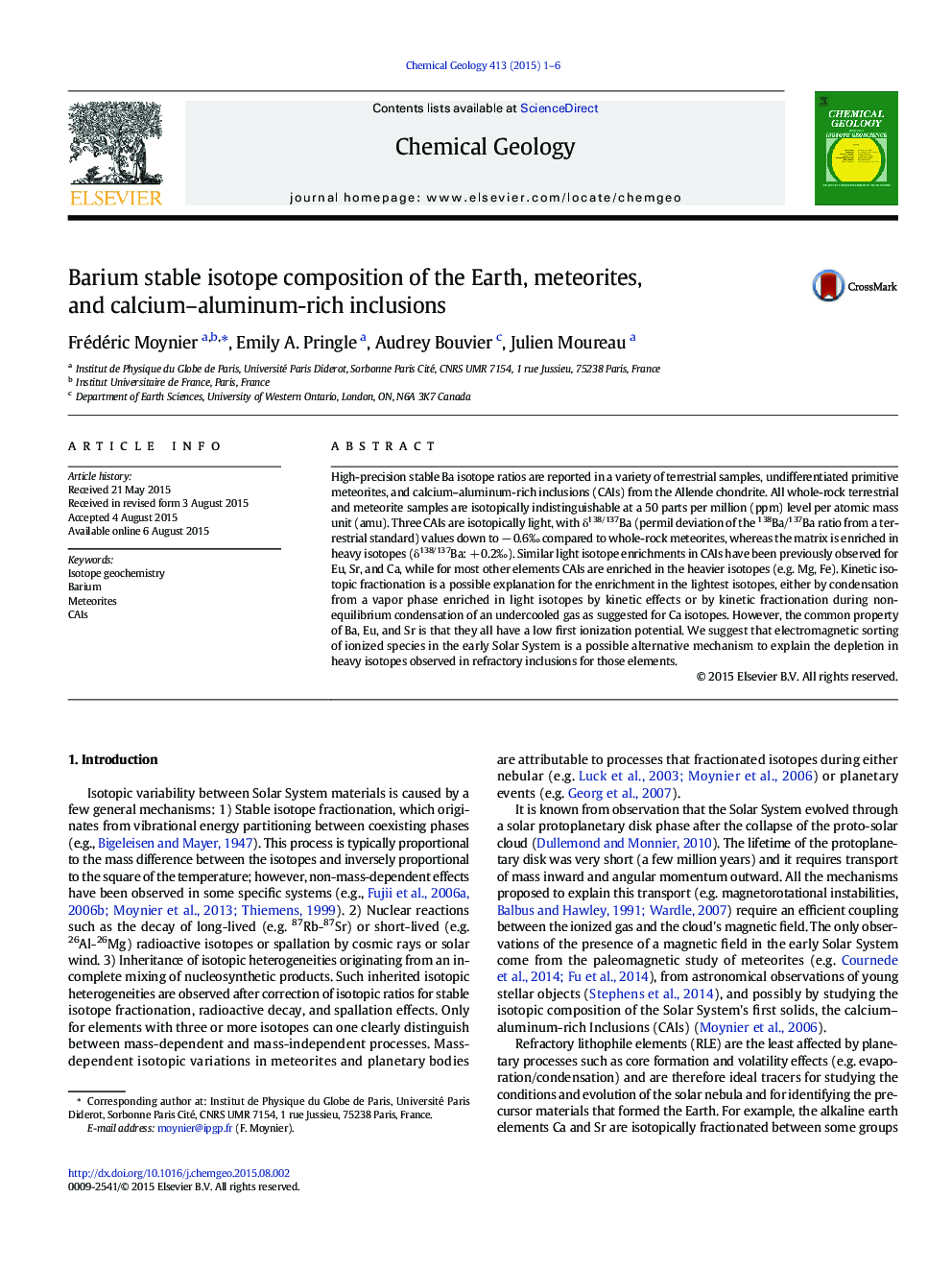| Article ID | Journal | Published Year | Pages | File Type |
|---|---|---|---|---|
| 4698461 | Chemical Geology | 2015 | 6 Pages |
•We measured high-precision stable Ba isotope ratios in terrestrial samples, meteorites, and CAIs.•CAIs are isotopically light down to − 0.6‰/amu compared to meteorites.•Similar light isotope enrichments in CAIs have been previously observed for Eu, Sr, and Ca.•Kinetic isotopic fractionation is a possible mechanism for the enrichment in the light isotopes of CAIs.•We favor an alternative mechanism by electromagnetic sorting of ionized species in the early Solar System.
High-precision stable Ba isotope ratios are reported in a variety of terrestrial samples, undifferentiated primitive meteorites, and calcium–aluminum-rich inclusions (CAIs) from the Allende chondrite. All whole-rock terrestrial and meteorite samples are isotopically indistinguishable at a 50 parts per million (ppm) level per atomic mass unit (amu). Three CAIs are isotopically light, with δ138/137Ba (permil deviation of the 138Ba/137Ba ratio from a terrestrial standard) values down to − 0.6‰ compared to whole-rock meteorites, whereas the matrix is enriched in heavy isotopes (δ138/137Ba: + 0.2‰). Similar light isotope enrichments in CAIs have been previously observed for Eu, Sr, and Ca, while for most other elements CAIs are enriched in the heavier isotopes (e.g. Mg, Fe). Kinetic isotopic fractionation is a possible explanation for the enrichment in the lightest isotopes, either by condensation from a vapor phase enriched in light isotopes by kinetic effects or by kinetic fractionation during non-equilibrium condensation of an undercooled gas as suggested for Ca isotopes. However, the common property of Ba, Eu, and Sr is that they all have a low first ionization potential. We suggest that electromagnetic sorting of ionized species in the early Solar System is a possible alternative mechanism to explain the depletion in heavy isotopes observed in refractory inclusions for those elements.
